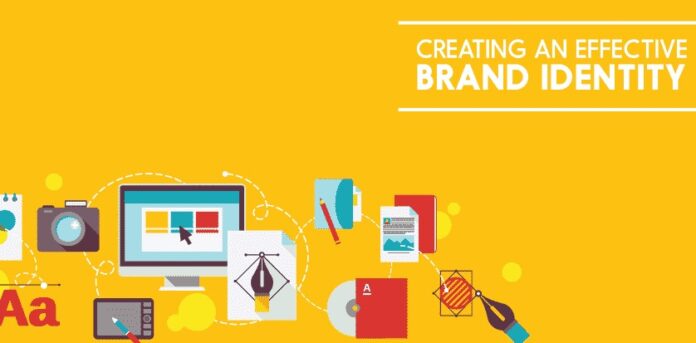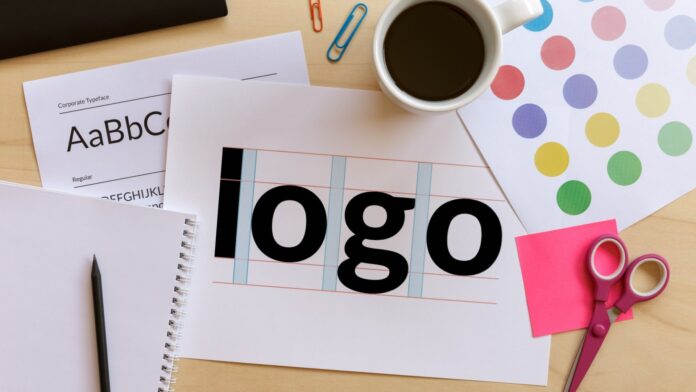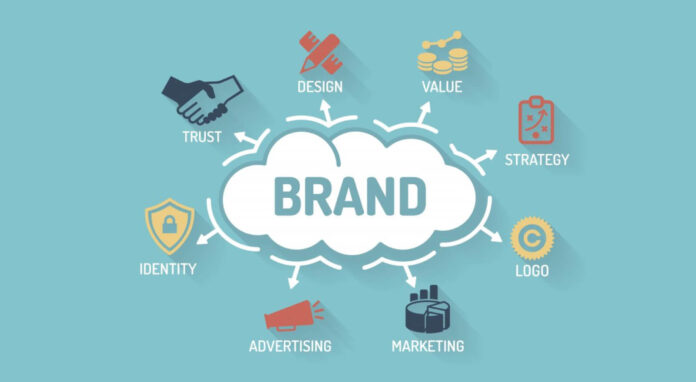Brand identity is the way a business presents itself to, and wants to be perceived by, its stakeholders. It is composed of what the organization says (visual, verbal, and behavioral elements), what the organization does (conditioned by policies and decisions), and how it behaves as a whole (corporate culture). Together these components form a lasting impression that reflects an image or impression of the organization.
Establishing a Mission

Creating a successful brand identity requires clear focus and concise business objectives. Establishing a brand mission is essential to setting up the parameters for creating an identity that will achieve your business goals, attract customers, and resonate with all audiences. A mission should succinctly express an organization’s purpose, values, and goals. This can be done by asking yourself what sets your organization apart from others, what do you provide customers or clients that no one else does, or how does your company operate that sets it apart from competitors? By answering these questions honestly and thoroughly, with the help of a branding agency if necessary, you will have a better understanding of the personality of your brand.
Crafting a Unique Story

As a business owner, one of the most important considerations in building an effective brand identity is crafting a unique story that your customers can become invested in. Every company has a story — some may require more work to be told but all businesses start at ground zero. To build a story for your brand, it’s important to focus on the aspects of your business that make it stand out from the competition and bring value to your customers.
Your brand narrative should communicate what sets you apart from others in the industry and give readers insight into why customers should believe or invest in what you have to offer. Your story should also reflect who you are as a business, including any past accomplishments or challenges faced along the way. This doesn’t have to take up too much space — it may even be achieved within just a few sentences — but it needs to effectively summarize what makes your company unique so people can understand what makes it special and worth investing time and money into.
Developing a Logo and Visuals

Once the strategy is finalized, it will be time to create a logo and accompanying visuals that reflect this new brand identity. A successful logo should be unique, appropriate, practical, graphically pleasing, and simple. While working on the logo design or visual elements for the brand identity, consider creating multiple versions of a logo, so it can be used interchangeably in different settings.
Compliant color schemes, fonts, and textures must all be considered in order to create a consistent overall brand look. Try to keep the key elements on the basic level and accessible enough that they’re coherent when utilized across media platforms or for promotion. Any appropriate animation should also be considered if applicable for particular settings or projects.
Creating Brand Messaging
Brand messaging is a way to establish an emotional connection with your target audience and get your story across effectively. It should accurately reflect what you stand for as a company, and be conveyed in an authentic tone. Before constructing your messages, it’s important to define what sets your business apart from competitors and convey this information in an inspiring manner that resonates with audiences.
Your brand messaging should encompass how you want people to experience or perceive your brand, what emotions you want them to feel when they interact with it, how they will benefit from it, why they should choose it over other competitors within the market or industry and what purpose it serves in their lives. Crafting a powerful message requires careful thoughtfulness and research on how you want to position yourself against industry rivals so that customers can appreciate why choosing you above others is worthwhile. Establishing an identity built on strong values and beliefs that are passed via clear communication channels will ensure successful growth for any organization!
Tracking and Measuring Performance
By tracking and measuring, you can better understand how your brand is performing in the marketplace, particularly when it comes to customer engagement. This provides invaluable information that can be used to adjust or refine your strategy as needed for continued success.
There is a range of tools available for tracking and measuring brand performance, allowing you to monitor customer conversations as well as changes in competitive market positions. Data-driven insights such as these can be used to determine the impact of various branding initiatives or campaigns, helping you make more informed decisions in how you approach future strategies.
Analyzing metrics such as brand recognition, reach, conversions, market share, sentiment analysis, and loyalty will also help measure the overall performance of your brand identity. Metrics should always be rooted in customer sentiment and anchored in tangible data (e.g., purchasing behavior) that gives an accurate picture of who your target audience is interacting with the brand. Ultimately this process provides clarity on what is working with customers and where adjustments need to be made across all marketing efforts.
Refining the Brand Identity

At this stage, brand identity is becoming clearer, and it’s important to refine the elements and messages of the brand to sharpen its differentiating value in the market. Start by researching consumer insights as much as possible – your own customers in addition to other competitors’ customers.
Factors that could influence the refinement of your identity include:
- Uncovering insights into the types of consumers who are most likely to be attracted to your product or service
- Establishing how those consumers prefer to interact with a brand (for example, social media or events)
- Exploring what lifestyle values resonate with your target audience
- Identifying any ‘lingo’ associated with this segment that could be used when communicating about your product or service
Branching out from here, refining visual design components such as logos, colors, and fonts can help ensure that everything is well aligned before taking a new product or service to market. Use the many tools at hand – from research and testing to focus groups – to ensure that when you enter a marketplace you have something unique and attractive for potential customers.
Final Thoughts

Building a brand identity from scratch can be an intimidating but rewarding process. It requires a lot of time and effort to create something that resonates with your target audience, and the end result should accurately reflect your company’s values and mission in order to truly make an impact. By following these steps, you will have all the tools you need to develop a successful brand identity that stands out from the crowd!









